The Flag Cichlid, scientifically known as Mesonauta festivus, is a captivating freshwater fish that has charmed aquarium enthusiasts for years. This South American native belongs to the Cichlidae family, sharing kinship with other popular aquarium fish like angelfish and discus. What makes the Flag Cichlid truly fascinating is its striking appearance and peaceful nature, a rare combination in the cichlid world.
Table of Contents
Imagine a fish that looks like it’s wearing a fancy dress, complete with vertical stripes and flowing fins. That’s the Flag Cichlid for you! Its Latin name, Mesonauta festivus, perfectly captures its festive look. “Mesonauta” means “middle sailor,” possibly referring to how it gracefully swims in the middle of the water column, while “festivus” means “festive” or “joyful”.
In the fish market, you might hear this beauty called by other names like Festivum Cichlid, Barred Cichlid, or Festive Cichlid. No matter what you call it, this fish is sure to bring a splash of color and personality to any tank.
In the wild, Flag Cichlids make their home in the slow-moving waters of South American rivers, including the Amazon and Paraná basins. They love to hang out near plants, using them for shelter and as hunting grounds. These omnivorous swimmers aren’t picky eaters, happily munching on small insects, crustaceans, and even some plant matter.
One of the most endearing traits of the Flag Cichlid is its relatively peaceful temperament. Unlike some of its more aggressive cichlid cousins, this fish can often get along well with other peaceful community fish. However, they can get a bit territorial during breeding time, so it’s best to give them plenty of space.
Speaking of breeding, Flag Cichlids have a fascinating reproductive behavior. They form monogamous pairs and work together to care for their young. The parents will clean a flat surface, often a leaf or stone, where the female lays her eggs. Both mom and dad then take turns fanning the eggs and protecting their babies from hungry tank mates.
Here’s a fun fact: Flag Cichlids are excellent parents, but they can be easily spooked. If startled, they might accidentally eat their own eggs or fry! That’s why it’s important to provide them with a calm, stress-free environment during breeding time.
The history of the Flag Cichlid in the aquarium trade is a testament to its enduring popularity. First described by Austrian zoologist Johann Jakob Heckel in 1840, these fish have been captivating aquarists for nearly two centuries.
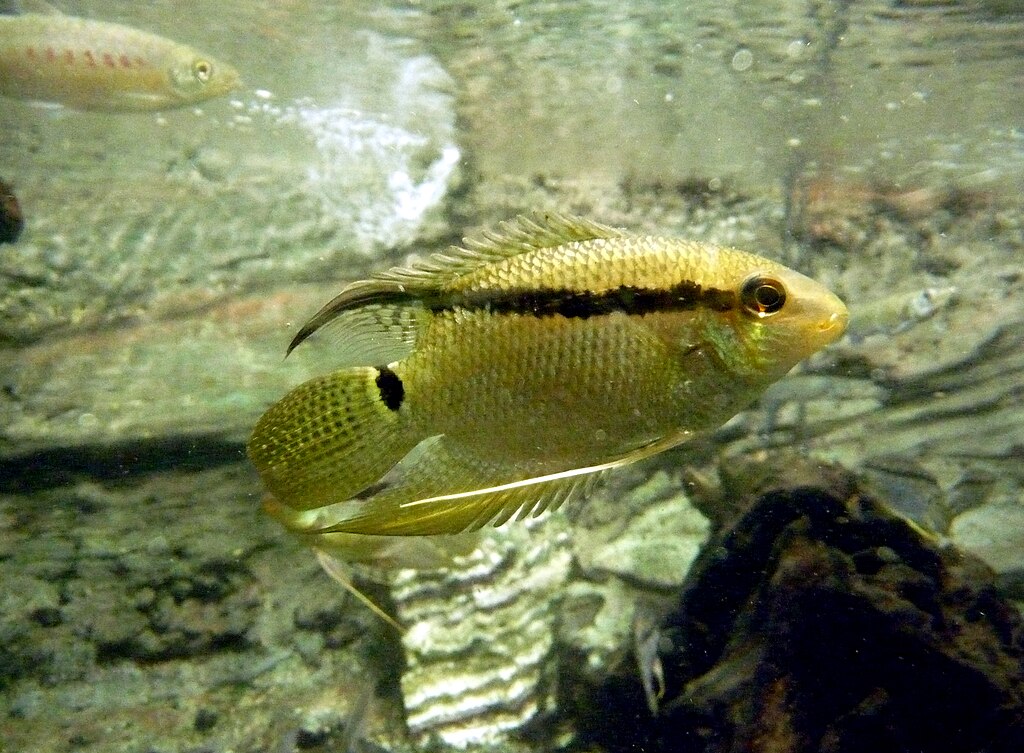
Flag Cichlid Key Information
The Flag Cichlid, a stunning addition to any aquarium, boasts a captivating array of colors that make it a true showstopper. Its body is adorned with vertical stripes in shades of yellow, orange, and black, creating a striking flag-like pattern that gives this fish its common name. The fins are often adorned with delicate lace-like patterns, adding an extra touch of elegance. Depending on the variant, you might encounter standard, gold, or even albino specimens, each with its own unique charm.
| Family | Cichlidae |
| Origin | South America |
| Price | $10 to $30 |
| Common Names | Flag Cichlid, Festivum Cichlid |
| Variants | Standard, Gold, Albino |
| Ideal Tank Size | 40 gallons |
| Water Parameters | pH 6.0 to 7.5, Temperature 75°F to 82°F |
| Lifespan | 8 to 10 years |
| Full Size | 6 to 8 inches |
| Natural Environment | Slow-moving waters of rivers and lakes |
| Behavior | Bottom, middle, and top dweller |
| Habitat Preference | Submerged structures and plants |
| Aquarium Decoration | Plants, rocks, and hiding spots |
| Ideal Tank Mates | Tetras, Rasboras, Corydoras |
| Fish to Avoid | Aggressive cichlids, Large catfish |
| Best Foods/Diet | Omnivorous diet including flakes, pellets, and vegetables |
| Disease | Prone to ich and fin rot |
| Sex-switch | No known sex-switching |
| Gender Differences | Males are typically larger with longer fins |
| Care Level | Moderate |
| Breeding Level | Intermediate |
This versatile fish is a joy to observe as it gracefully navigates all levels of the aquarium, from the bottom to the top. Its adaptability and striking appearance make it a favorite among aquarium enthusiasts of various experience levels.
Ideal Tank Mates for Flag Cichlid
The Flag Cichlid (Mesonauta festivus) is a peaceful and relatively timid species that can thrive in a community tank with the right companions. When selecting tank mates, it’s essential to consider fish that share similar water parameters and temperaments. Here are 10 ideal tank mates for the Flag Cichlid, each offering unique compatibility benefits:
Angelfish (Pterophyllum scalare)
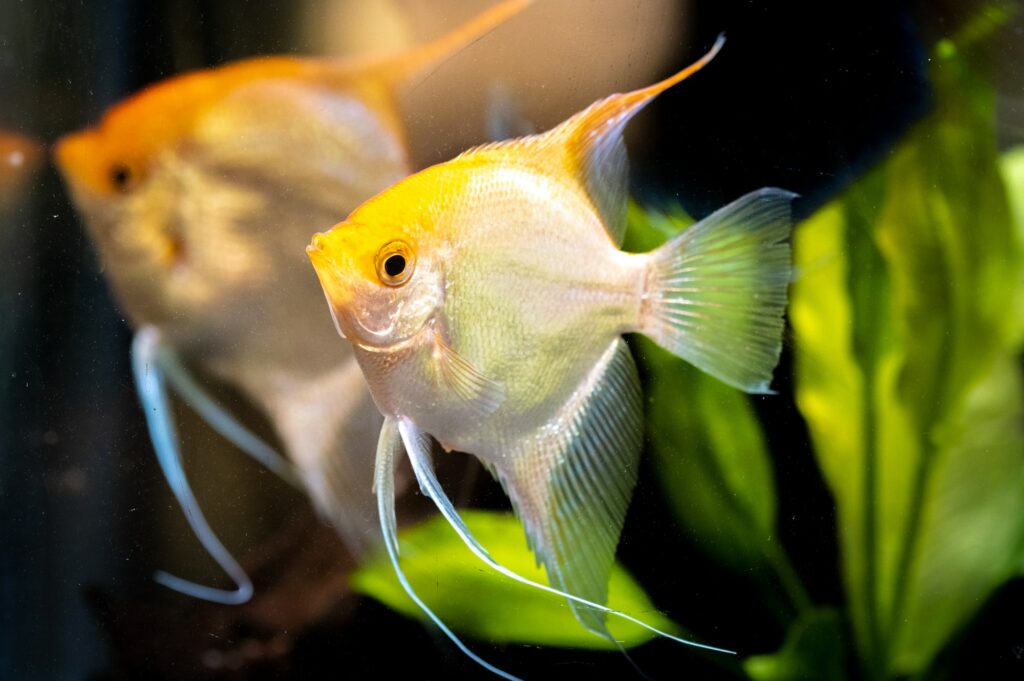
Angelfish make excellent companions for Flag Cichlids due to their similar size and temperament. Both species originate from South American waters and prefer similar water conditions. The graceful movements of Angelfish complement the Flag Cichlid’s swimming patterns, creating a visually appealing display in the aquarium.
| Common/Market Names | Price Range | Care Level | Behavior | Life Span | Max Size |
|---|---|---|---|---|---|
| Angelfish, Freshwater Angelfish | $5-$30 | Moderate | Peaceful | 10-15 years | 6 inches |
Discus (Symphysodon discus)
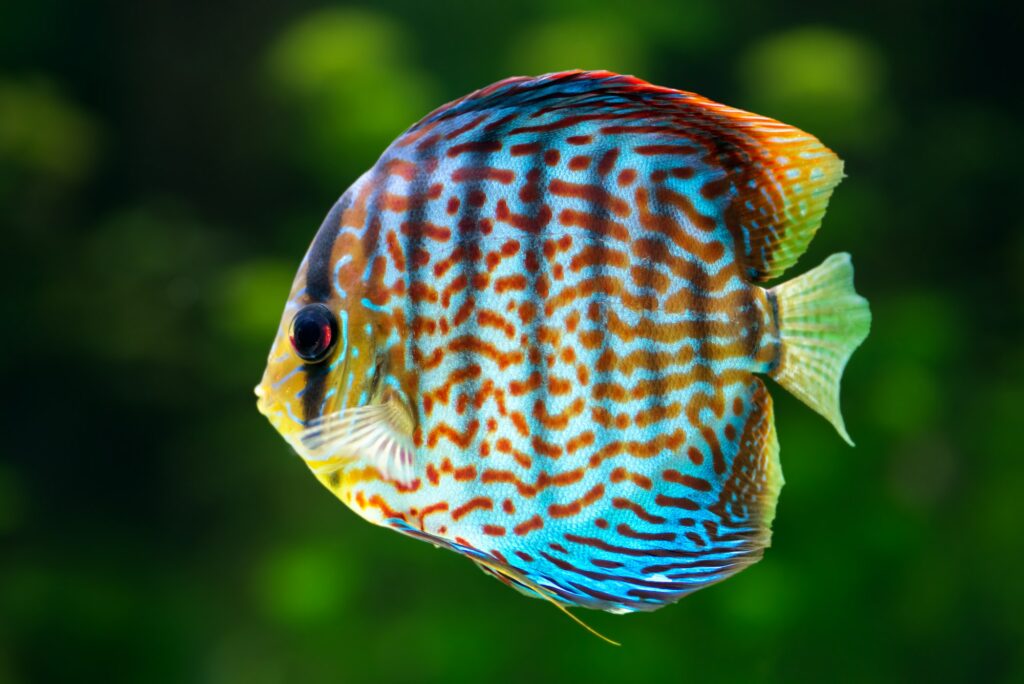
Discus fish are another South American cichlid that can coexist peacefully with Flag Cichlids. Their calm nature and preference for planted environments align well with the Flag Cichlid’s habits. The striking colors of Discus can create a beautiful contrast with the Flag Cichlid’s patterns.
| Common/Market Names | Price Range | Care Level | Behavior | Life Span | Max Size |
|---|---|---|---|---|---|
| Discus, Pompadour Fish | $40-$200+ | Advanced | Peaceful | 10-15 years | 8 inches |
Corydoras Catfish (Corydoras spp.)
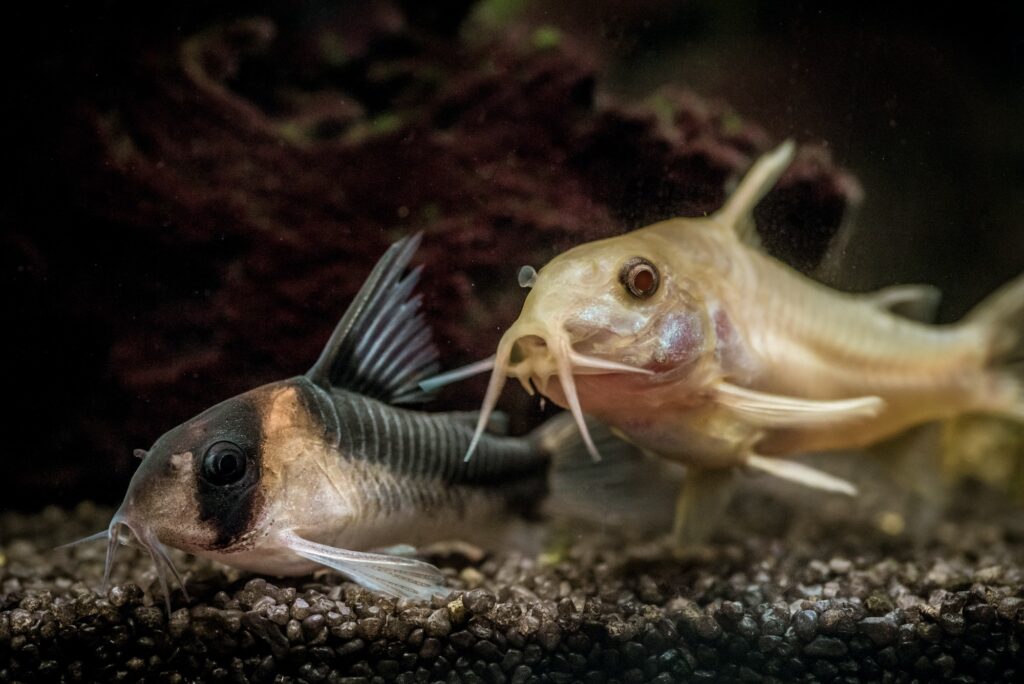
Corydoras catfish are excellent bottom-dwelling companions for Flag Cichlids. Their peaceful nature and tendency to stay near the substrate complement the Flag Cichlid’s mid-water swimming habits. Corydoras also help keep the tank clean by scavenging for leftover food.
| Common/Market Names | Price Range | Care Level | Behavior | Life Span | Max Size |
|---|---|---|---|---|---|
| Cory Catfish, Armored Catfish | $3-$15 | Easy | Peaceful | 3-5 years | 2-3 inches |
Rummy Nose Tetra (Hemigrammus rhodostomus)
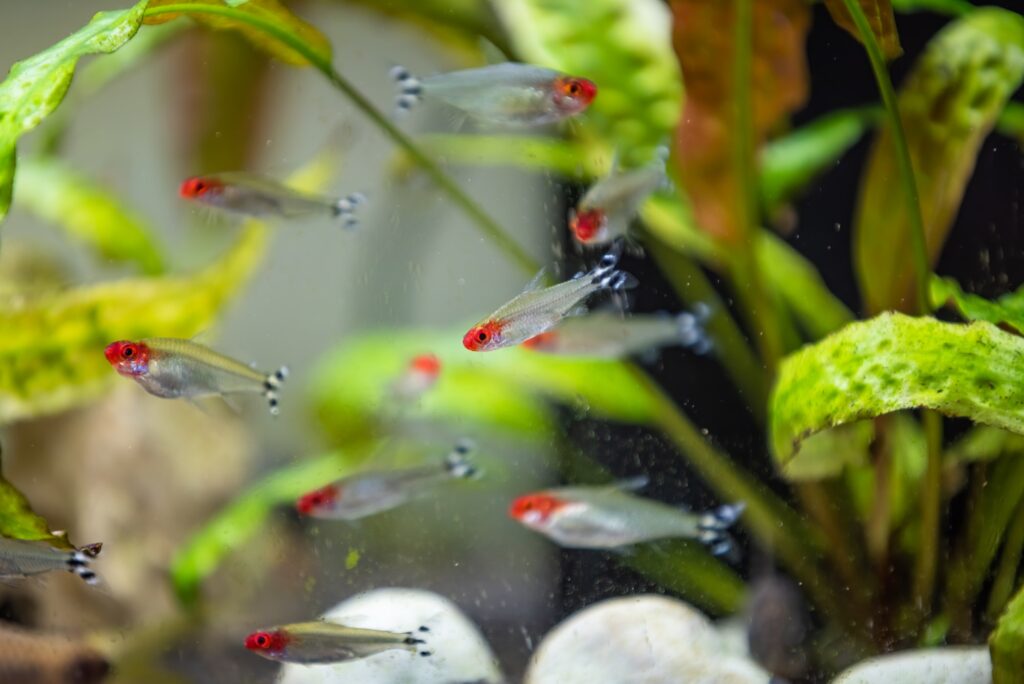
Rummy Nose Tetras are small, peaceful schooling fish that can add movement and color to the middle water column. Their tight schooling behavior can help make Flag Cichlids feel more secure in the aquarium, encouraging them to be more active and visible.
| Common/Market Names | Price Range | Care Level | Behavior | Life Span | Max Size |
|---|---|---|---|---|---|
| Rummy Nose Tetra, Firehead Tetra | $2-$5 | Easy | Peaceful | 5-6 years | 2 inches |
Bolivian Ram (Mikrogeophagus altispinosus)
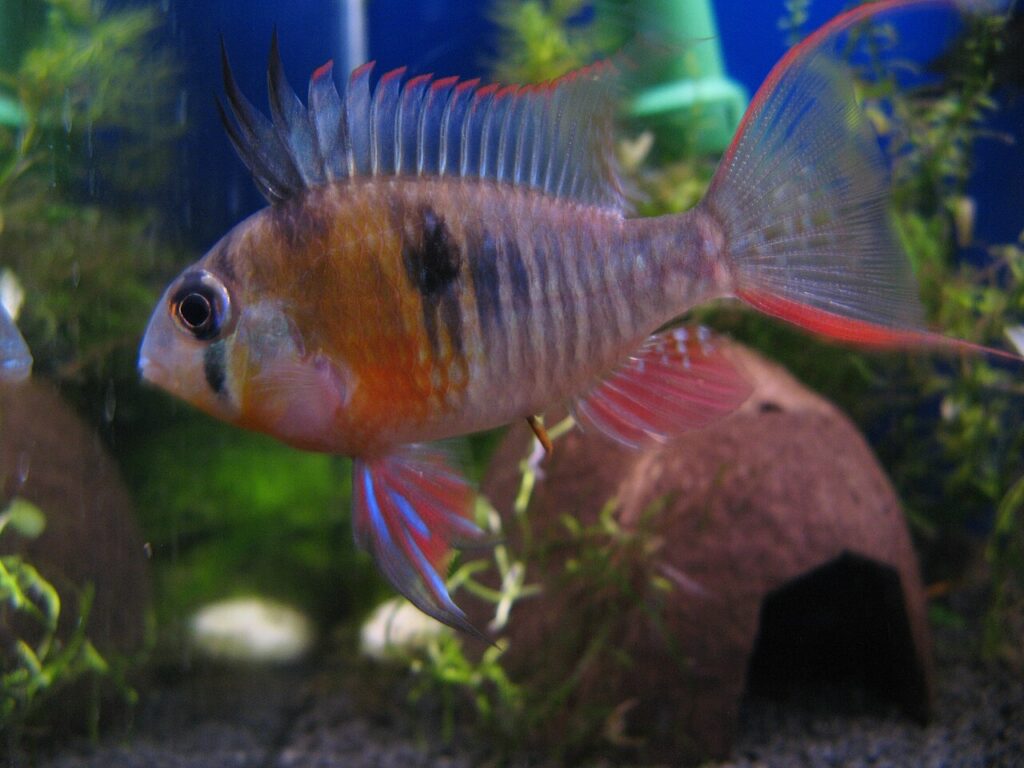
Bolivian Rams are small, peaceful cichlids that share similar water requirements with Flag Cichlids. Their gentle nature and preference for the lower parts of the aquarium make them compatible tank mates. Bolivian Rams can add interesting behavior to the tank without competing for territory with Flag Cichlids.
| Common/Market Names | Price Range | Care Level | Behavior | Life Span | Max Size |
|---|---|---|---|---|---|
| Bolivian Ram, Ruby Crown Cichlid | $8-$15 | Moderate | Peaceful | 3-4 years | 3 inches |
Pearl Gourami (Trichopodus leerii)
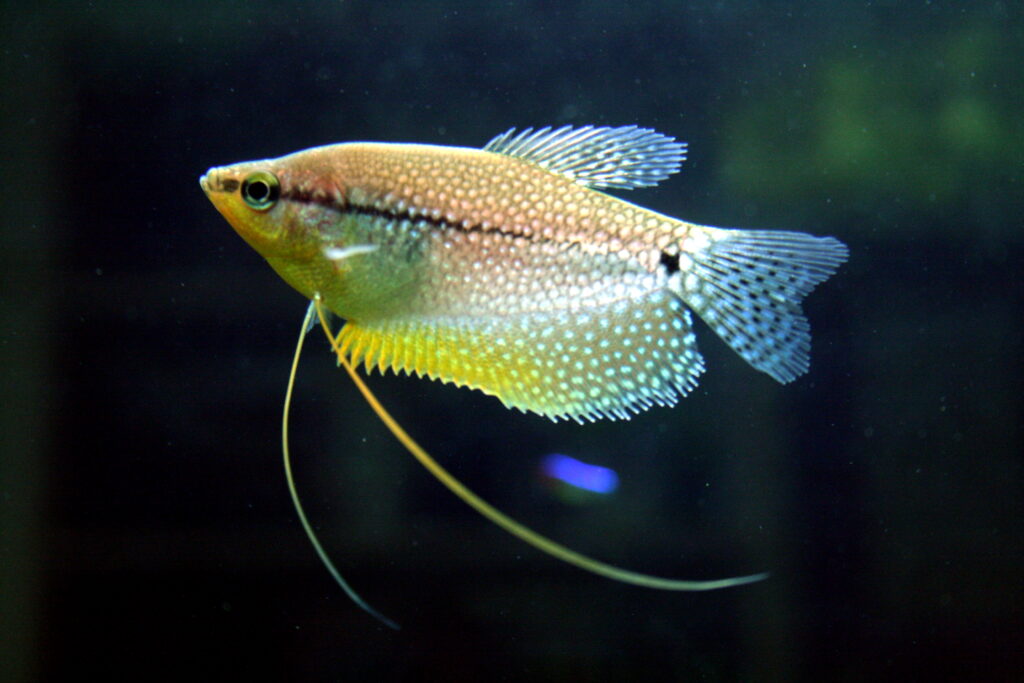
Pearl Gouramis are peaceful labyrinth fish that can coexist well with Flag Cichlids. Their calm demeanor and preference for the upper water levels complement the Flag Cichlid’s mid-water habits. The pearlescent scales of these gouramis can add a shimmering effect to the aquarium.
| Common/Market Names | Price Range | Care Level | Behavior | Life Span | Max Size |
|---|---|---|---|---|---|
| Pearl Gourami, Lace Gourami | $5-$10 | Easy | Peaceful | 4-5 years | 4-5 inches |
Harlequin Rasbora (Trigonostigma heteromorpha)
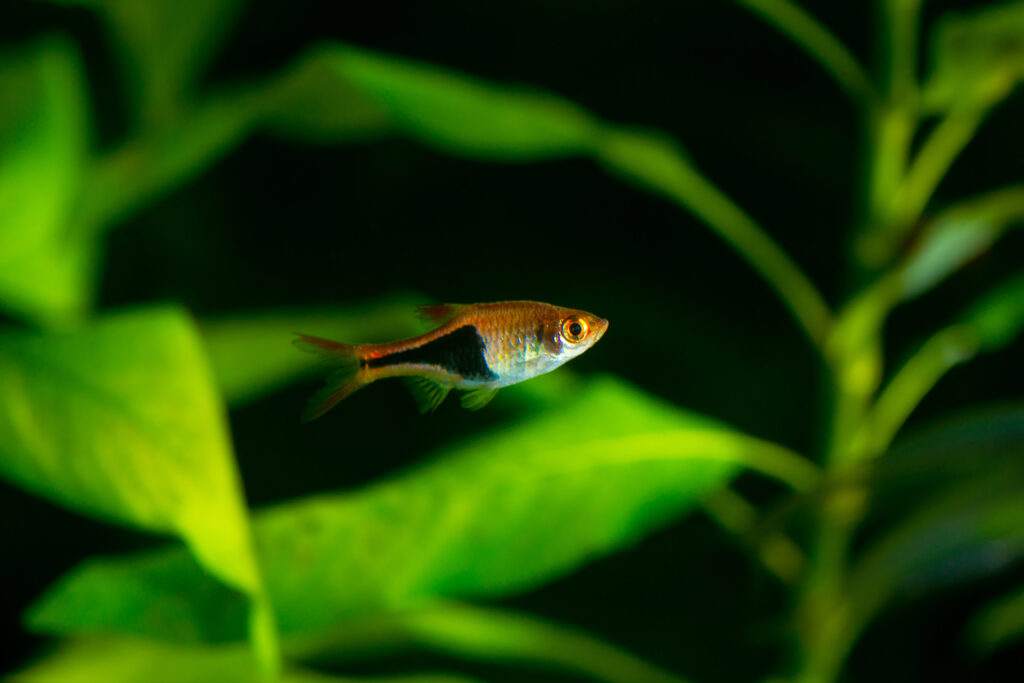
Harlequin Rasboras are small, peaceful schooling fish that can add vibrant color to the upper parts of the aquarium. Their active swimming and striking patterns can create an interesting contrast with the Flag Cichlid’s more subdued coloration.
| Common/Market Names | Price Range | Care Level | Behavior | Life Span | Max Size |
|---|---|---|---|---|---|
| Harlequin Rasbora, Red Rasbora | $2-$4 | Easy | Peaceful | 5-8 years | 2 inches |
Bristlenose Pleco (Ancistrus cirrhosus)
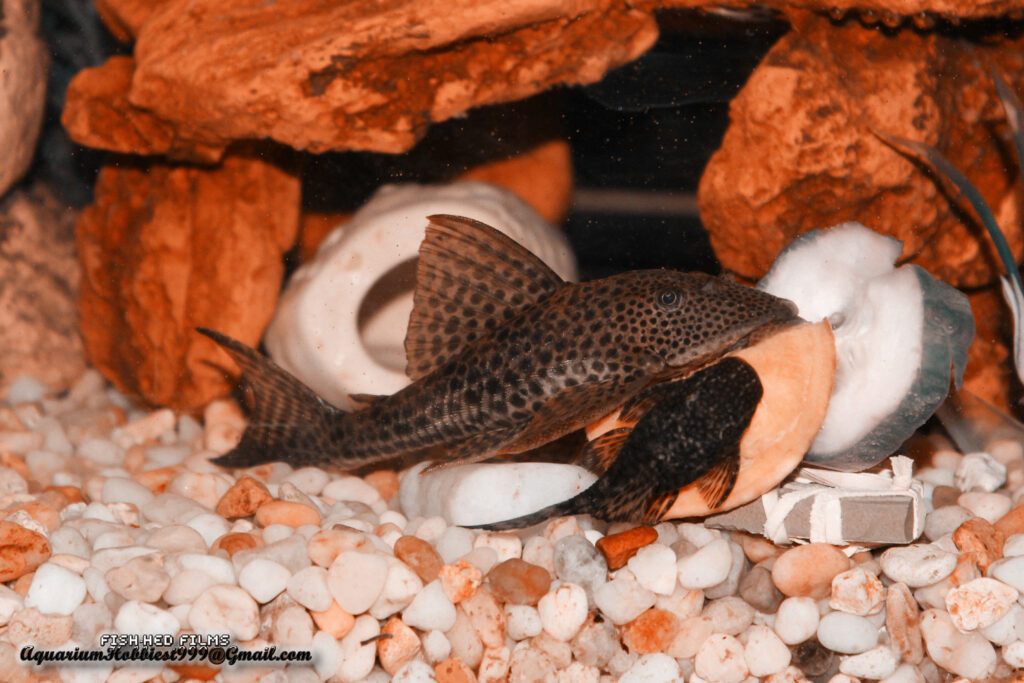
Bristlenose Plecos are excellent algae-eaters that can help maintain a clean aquarium. Their peaceful nature and preference for hiding make them compatible with Flag Cichlids. These catfish also add an interesting texture to the tank with their unique appearance.
| Common/Market Names | Price Range | Care Level | Behavior | Life Span | Max Size |
|---|---|---|---|---|---|
| Bristlenose Pleco, Bushynose Catfish | $5-$15 | Easy | Peaceful | 5-10 years | 4-5 inches |
Kuhli Loach (Pangio kuhlii)
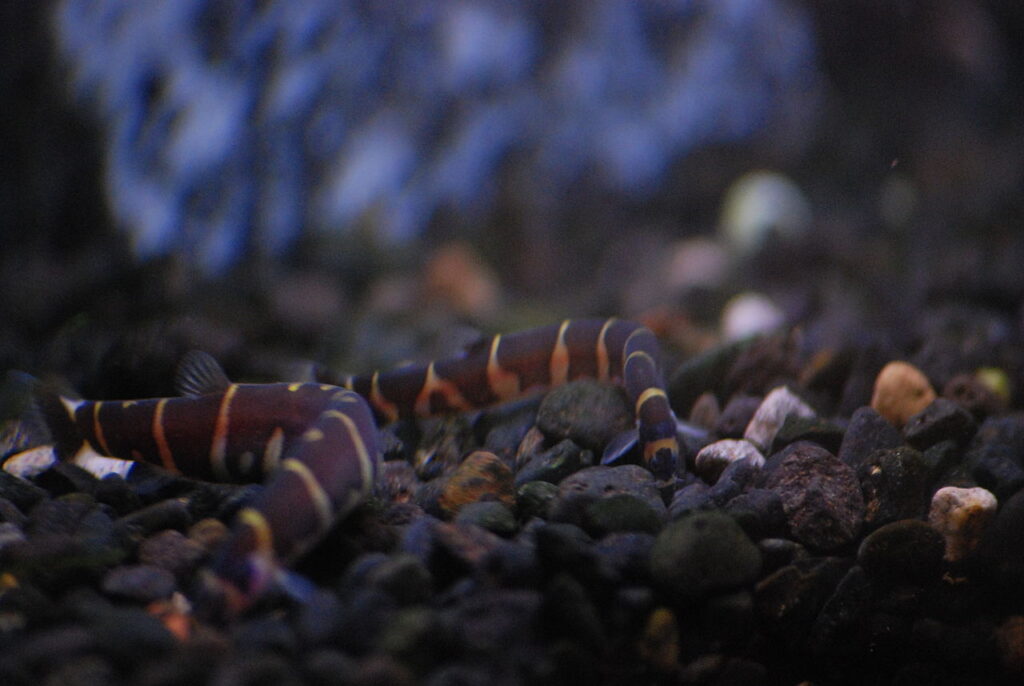
Kuhli Loaches are fascinating bottom-dwellers that can coexist peacefully with Flag Cichlids. Their eel-like appearance and nocturnal habits add diversity to the tank ecosystem without competing for space or resources with the Flag Cichlids.
| Common/Market Names | Price Range | Care Level | Behavior | Life Span | Max Size |
|---|---|---|---|---|---|
| Kuhli Loach, Coolie Loach | $3-$7 | Easy | Peaceful | 10-14 years | 4 inches |
Dwarf Gourami (Trichogaster lalius)
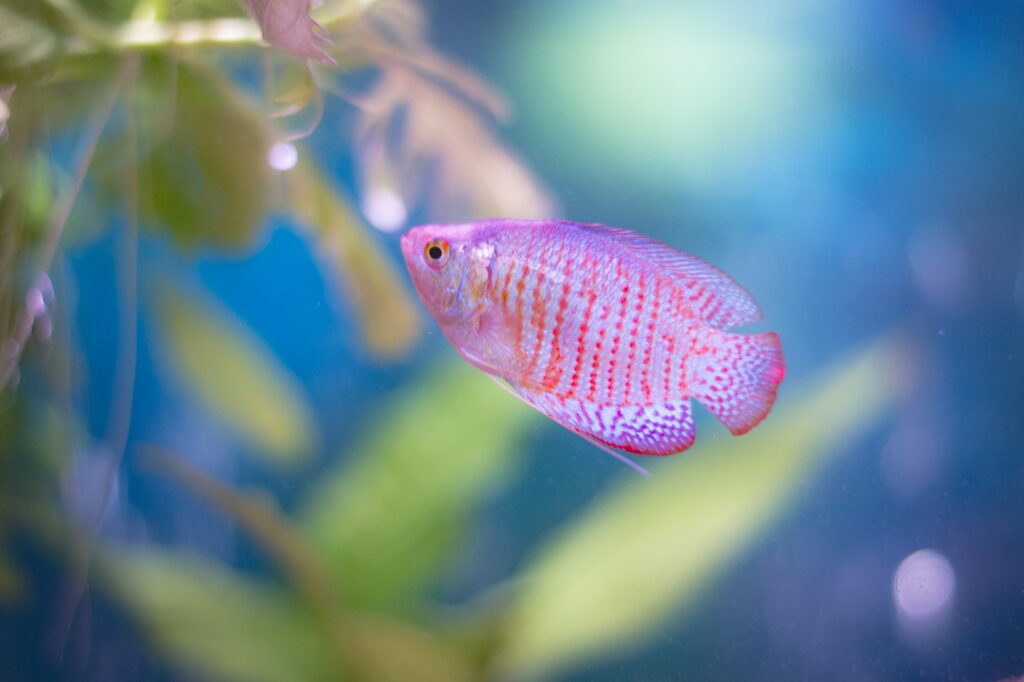
Dwarf Gouramis are colorful and peaceful fish that can add a splash of vibrant color to the upper parts of the aquarium. Their calm nature and small size make them compatible with Flag Cichlids, and their labyrinth organ allows them to utilize different parts of the water column.
| Common/Market Names | Price Range | Care Level | Behavior | Life Span | Max Size |
|---|---|---|---|---|---|
| Dwarf Gourami, Flame Gourami | $4-$8 | Easy | Peaceful | 4-5 years | 2-3 inches |
FAQs about Flag Cichlid
How often should I feed my Flag Cichlid?
Feed your Flag Cichlid small portions 2-3 times a day. Offer only as much food as they can consume within 2-3 minutes to prevent overfeeding and maintain water quality.
Can Flag Cichlids change color?
Yes, Flag Cichlids can change their color intensity based on mood, stress levels, and breeding condition. They may become more vibrant during courtship or paler when stressed.
Do Flag Cichlids need a heater in their tank?
A heater is recommended for Flag Cichlids as they prefer stable, warm water temperatures between 75°F and 82°F. Fluctuations in temperature can stress the fish and make them more susceptible to diseases.
How can I tell if my Flag Cichlid is male or female?
Distinguishing between male and female Flag Cichlids can be challenging. Generally, males are larger and have more elongated dorsal and anal fins. During breeding season, females may develop a rounder belly.
Are Flag Cichlids fin nippers?
Flag Cichlids are generally not known for fin nipping. However, they may occasionally nip at long-finned fish if kept in overcrowded conditions or if they feel threatened.
How many Flag Cichlids should be kept together?
Flag Cichlids can be kept in pairs or small groups. For a community tank, a pair or trio (1 male, 2 females) works well. In larger tanks, you can keep multiple pairs, but ensure there’s enough space to prevent territorial disputes.
Can Flag Cichlids live in a planted aquarium?
Yes, Flag Cichlids do well in planted aquariums. They appreciate the cover and natural environment that plants provide. However, they may occasionally nibble on soft-leaved plants, so choose hardy plant species.
How do I encourage breeding behavior in Flag Cichlids?
To encourage breeding, provide plenty of flat surfaces like broad leaves or slate for egg laying. Slightly lower the water level and increase the temperature to about 80°F. Ensure the pair has a quiet, stress-free environment.
Are Flag Cichlids sensitive to water changes?
While Flag Cichlids appreciate clean water, they can be sensitive to sudden changes. Perform regular, small water changes (10-20% weekly) rather than infrequent large ones to maintain stable water parameters.
Can Flag Cichlids recognize their owners?
Many cichlid species, including Flag Cichlids, are known for their intelligence and can learn to recognize their owners over time. They may become more active or swim to the front of the tank when they see a familiar face.